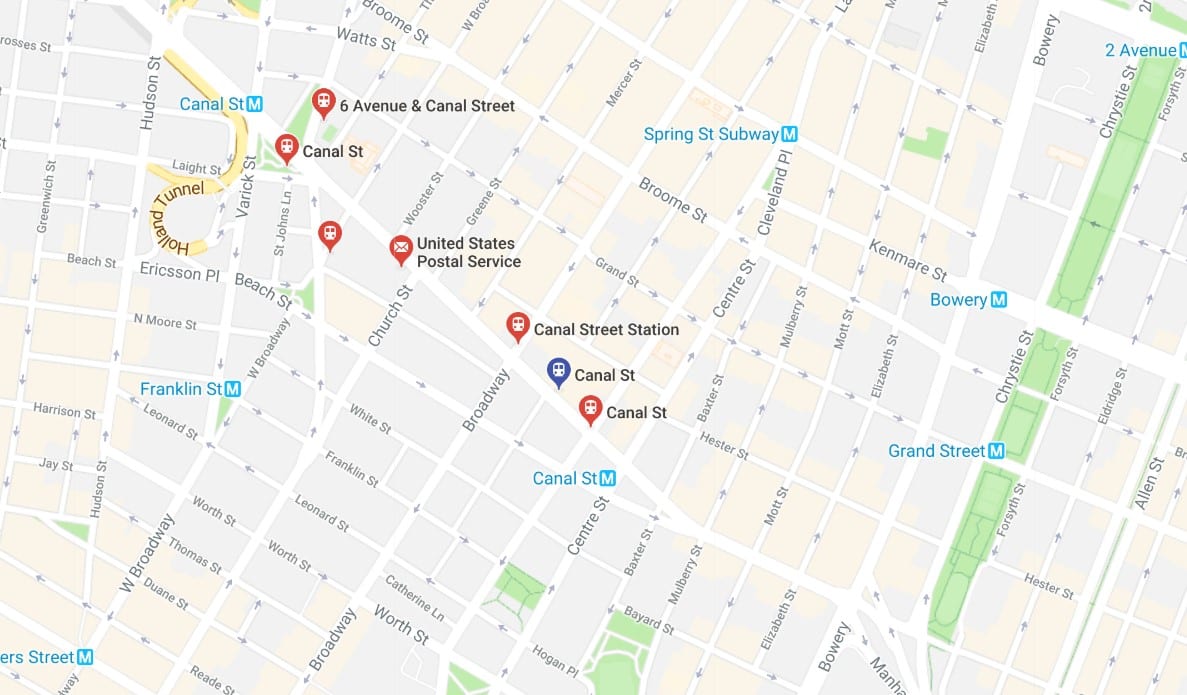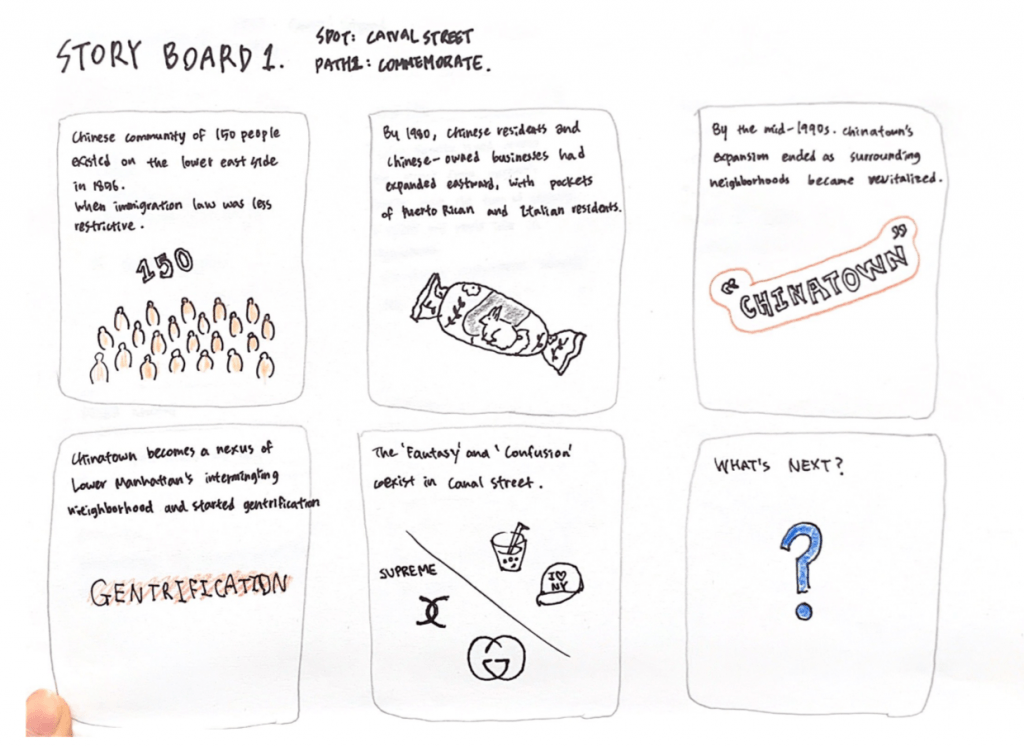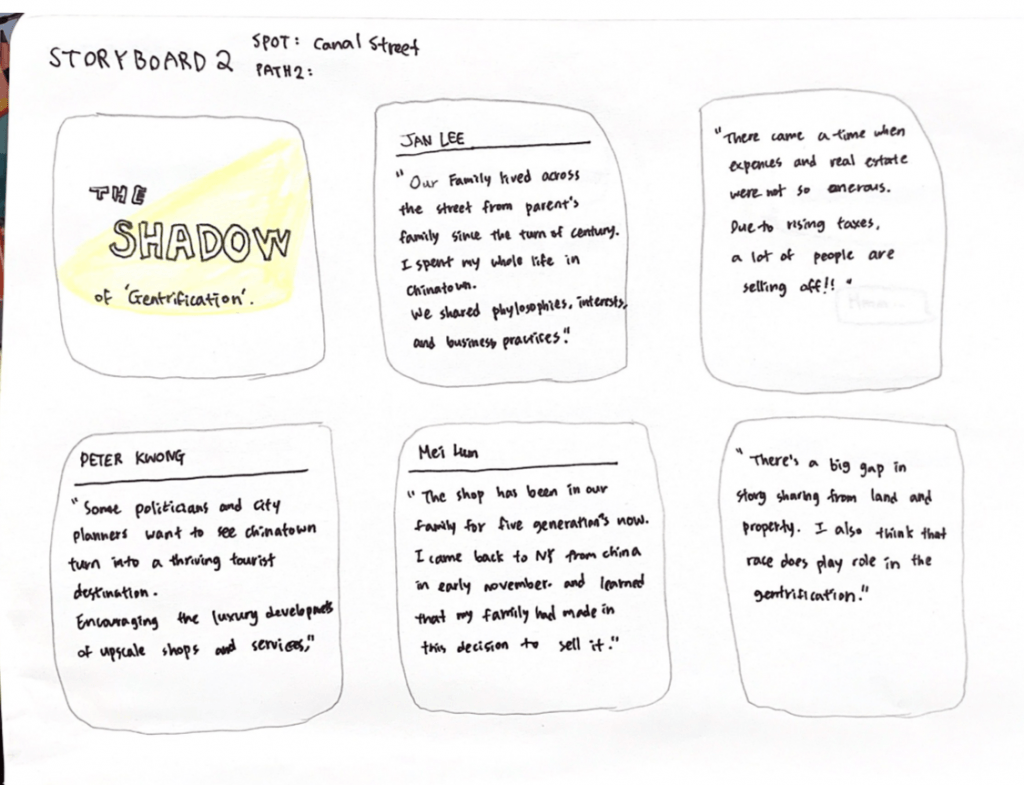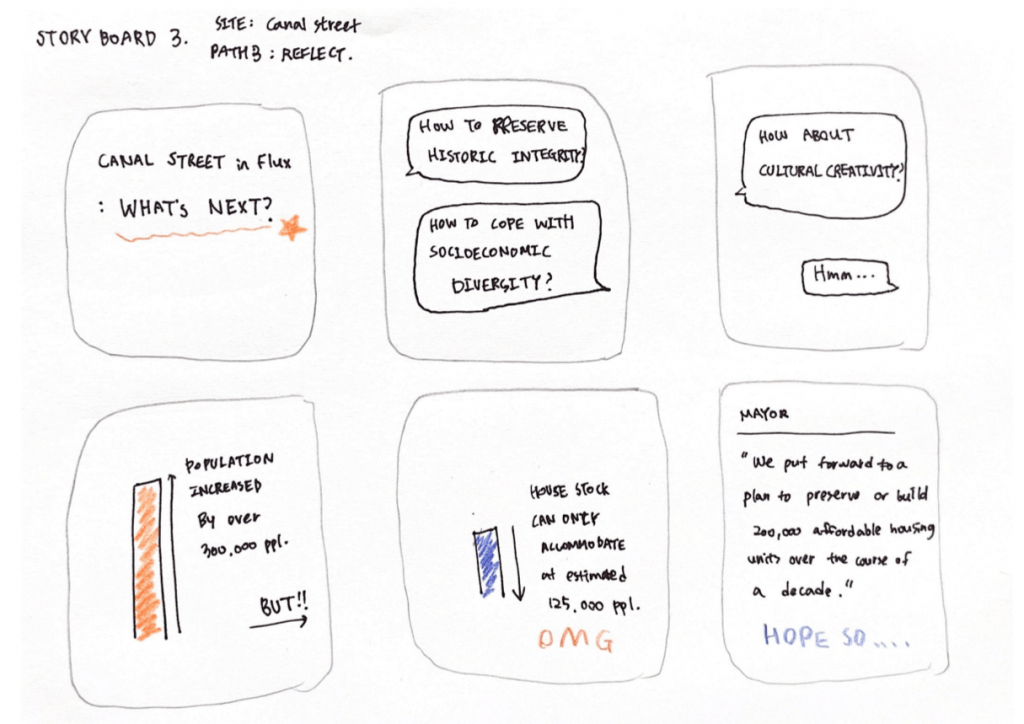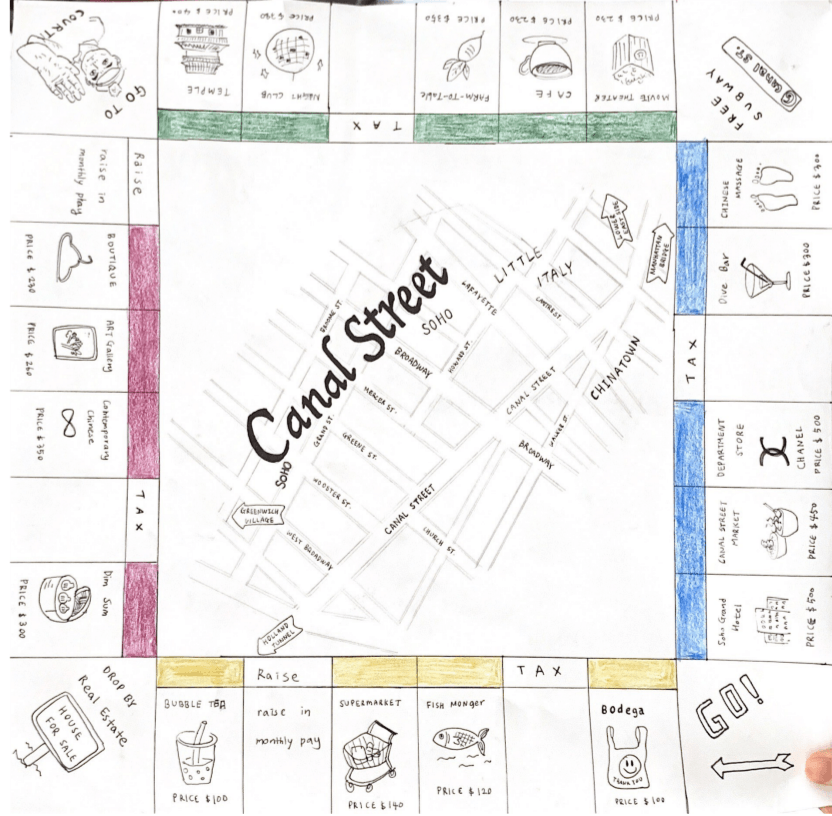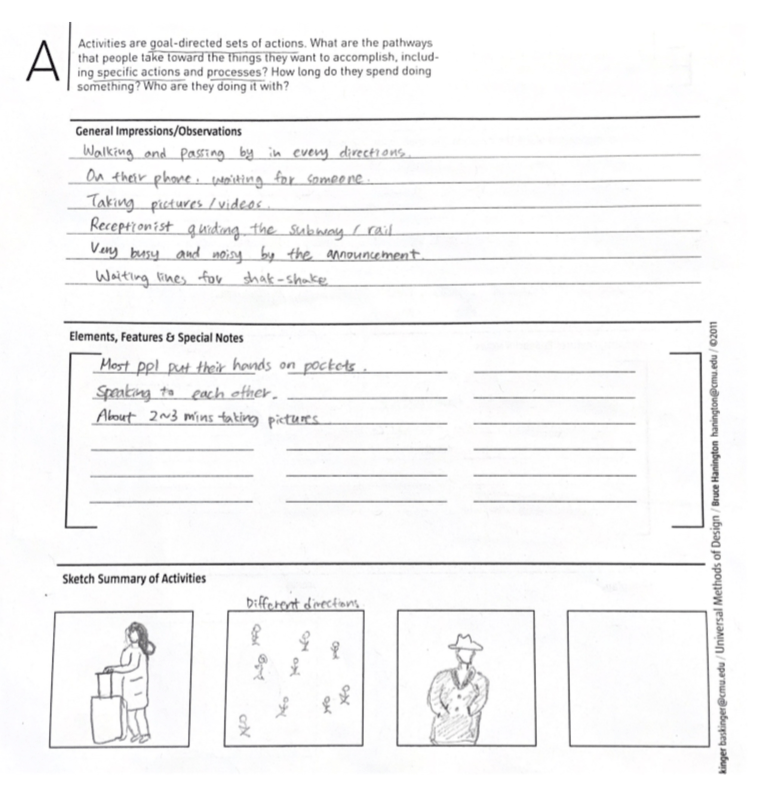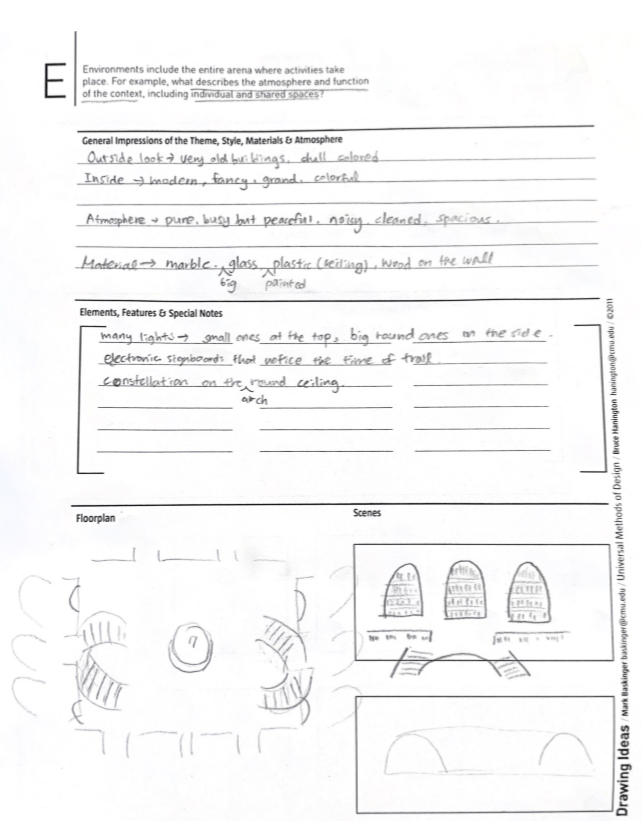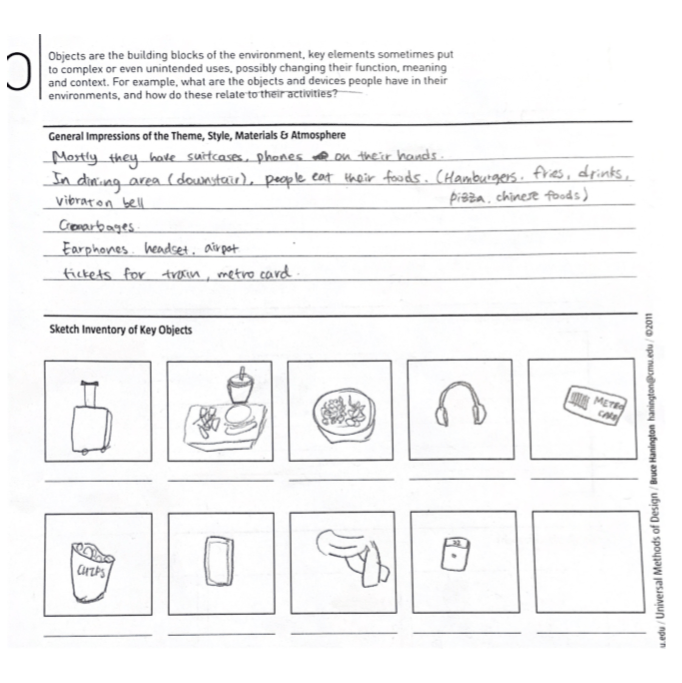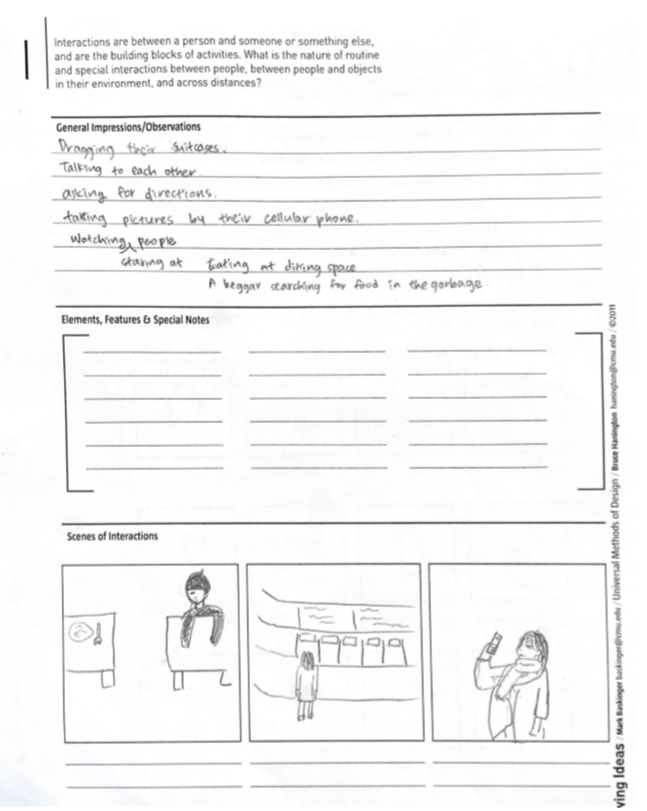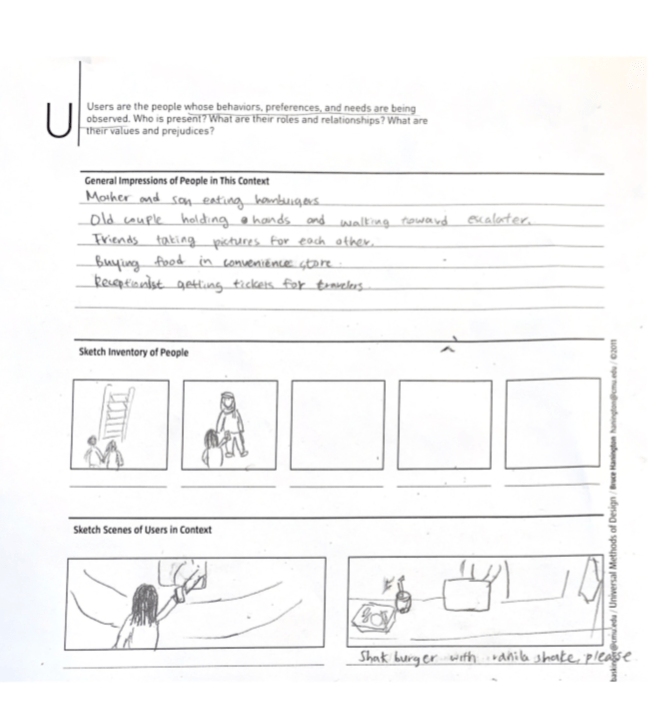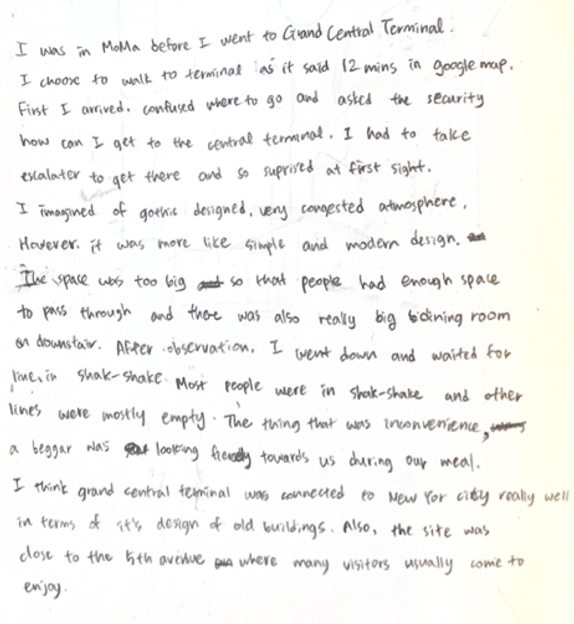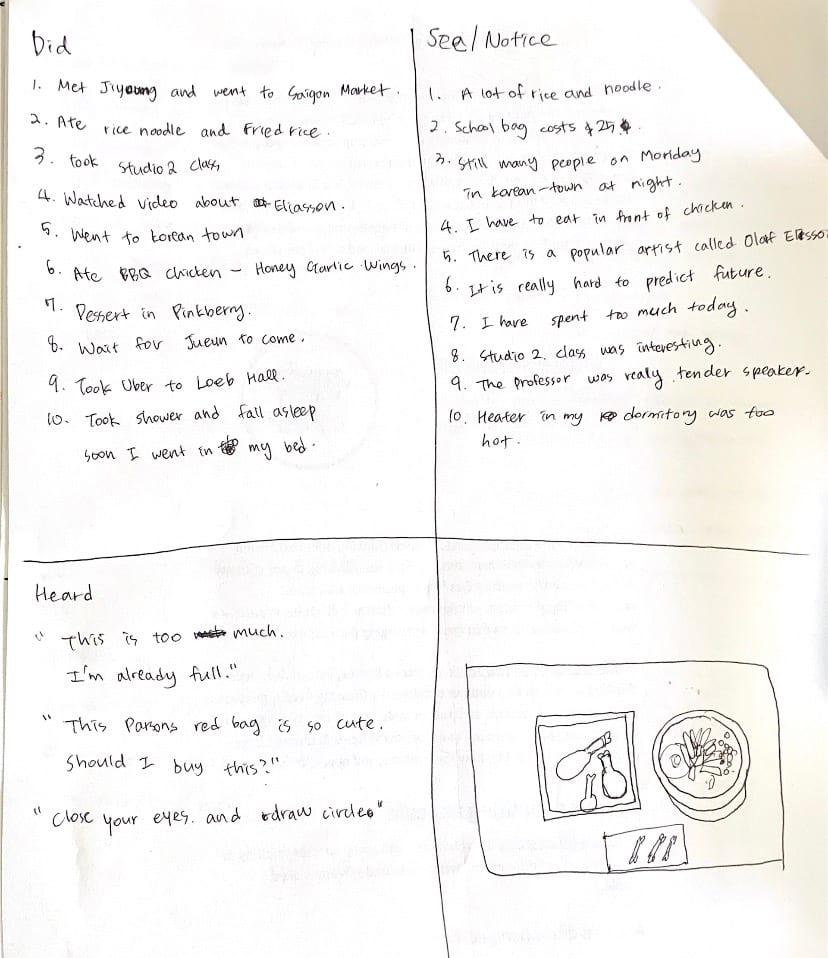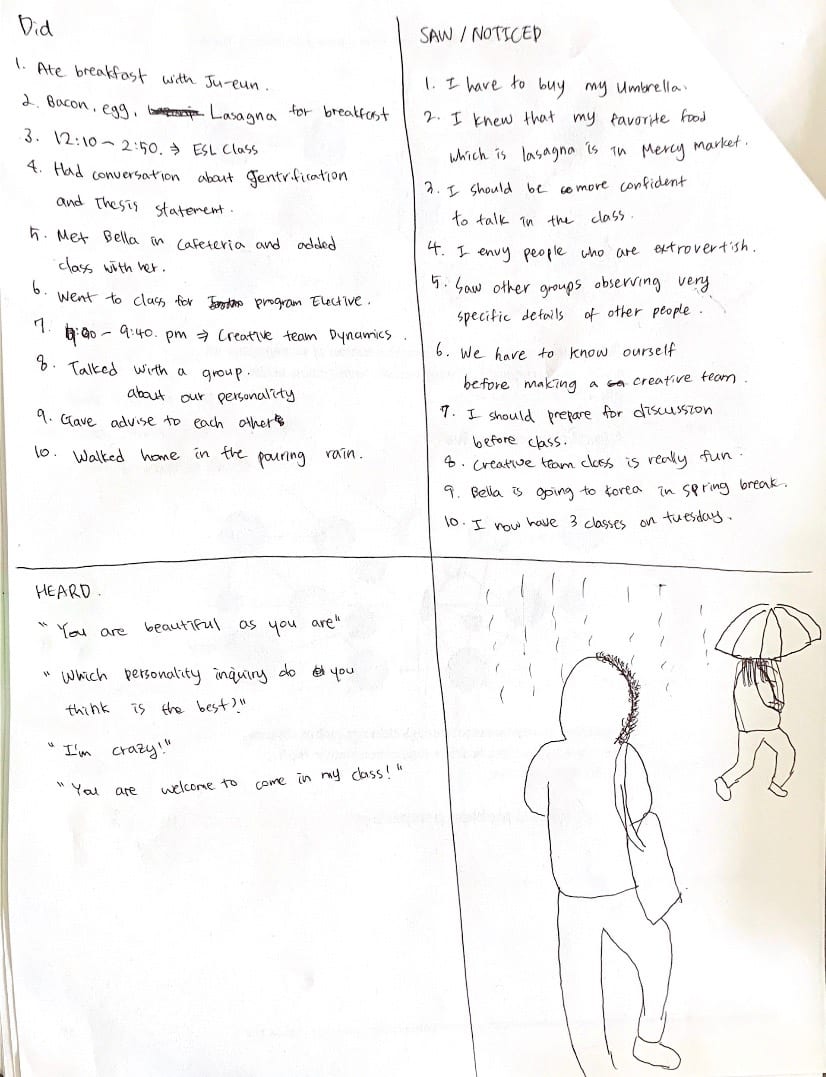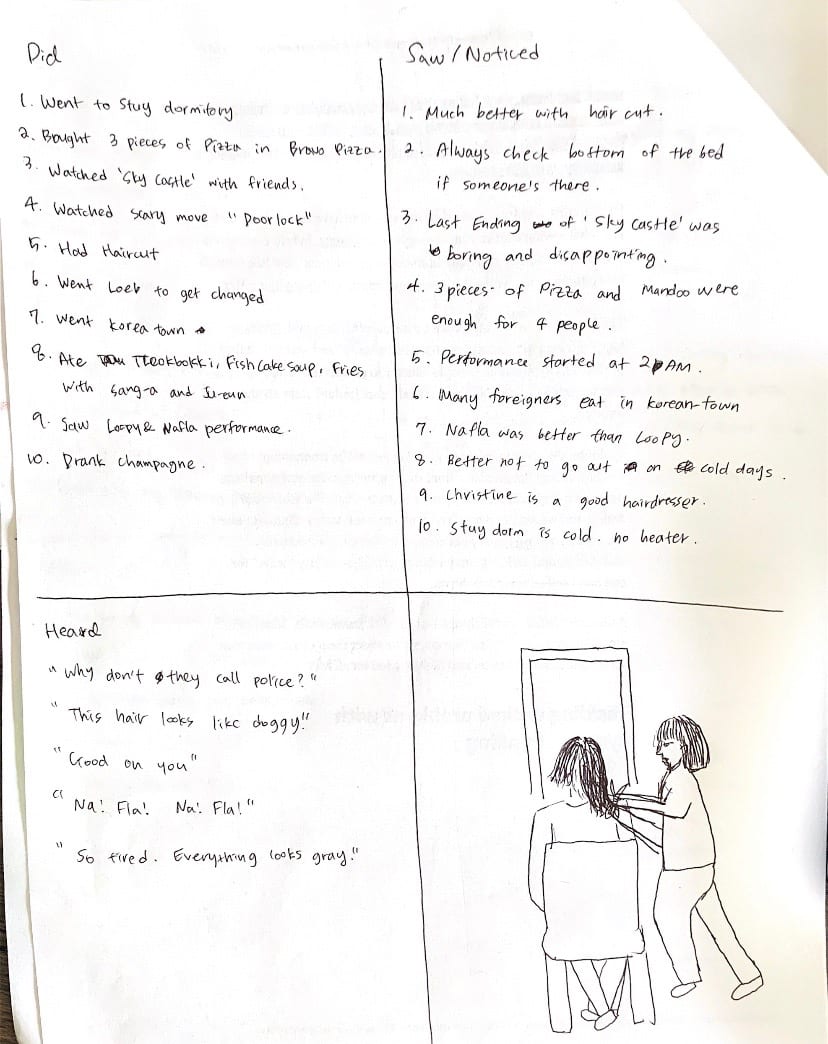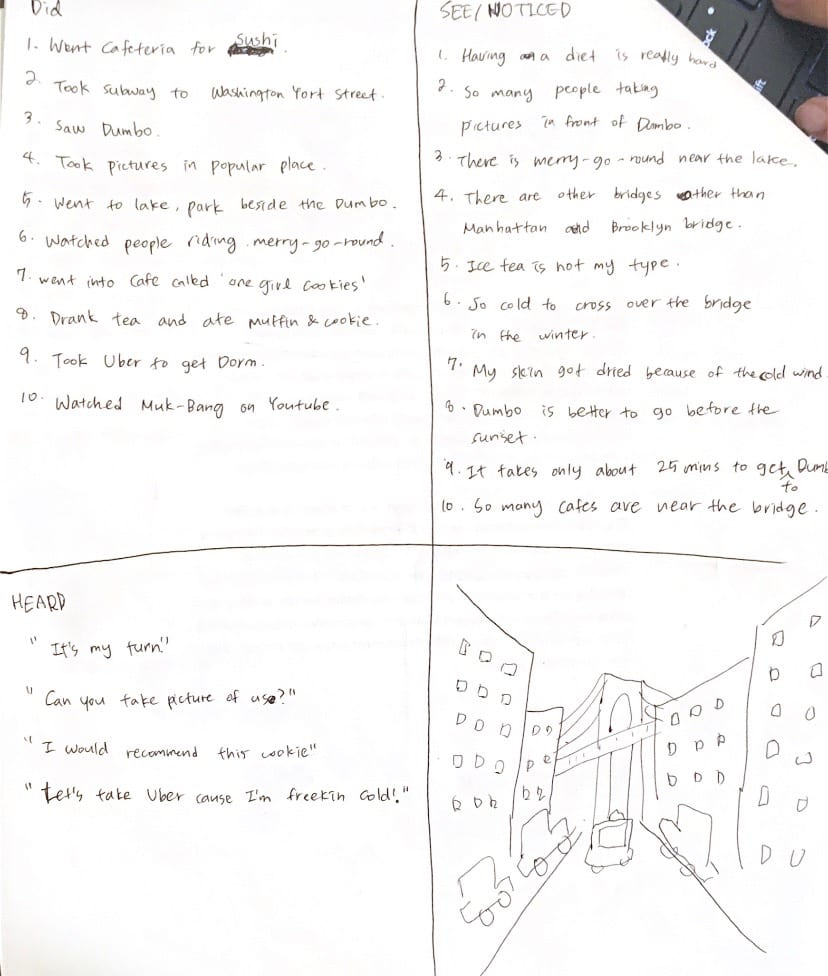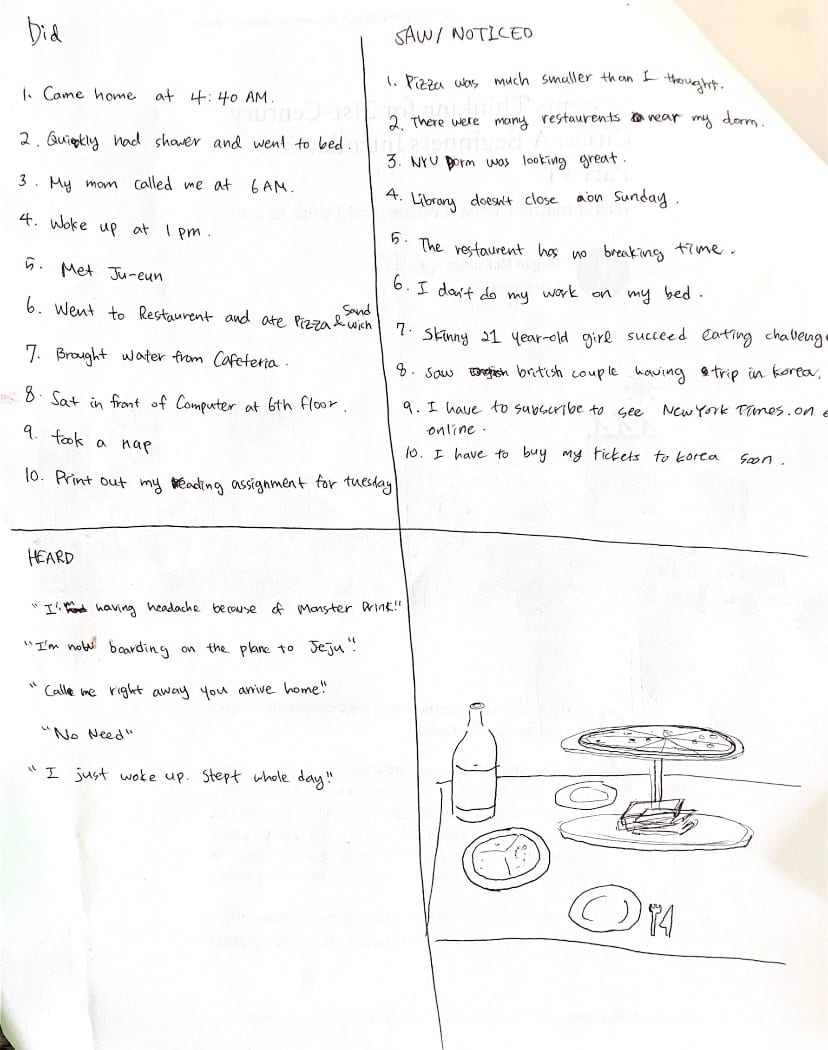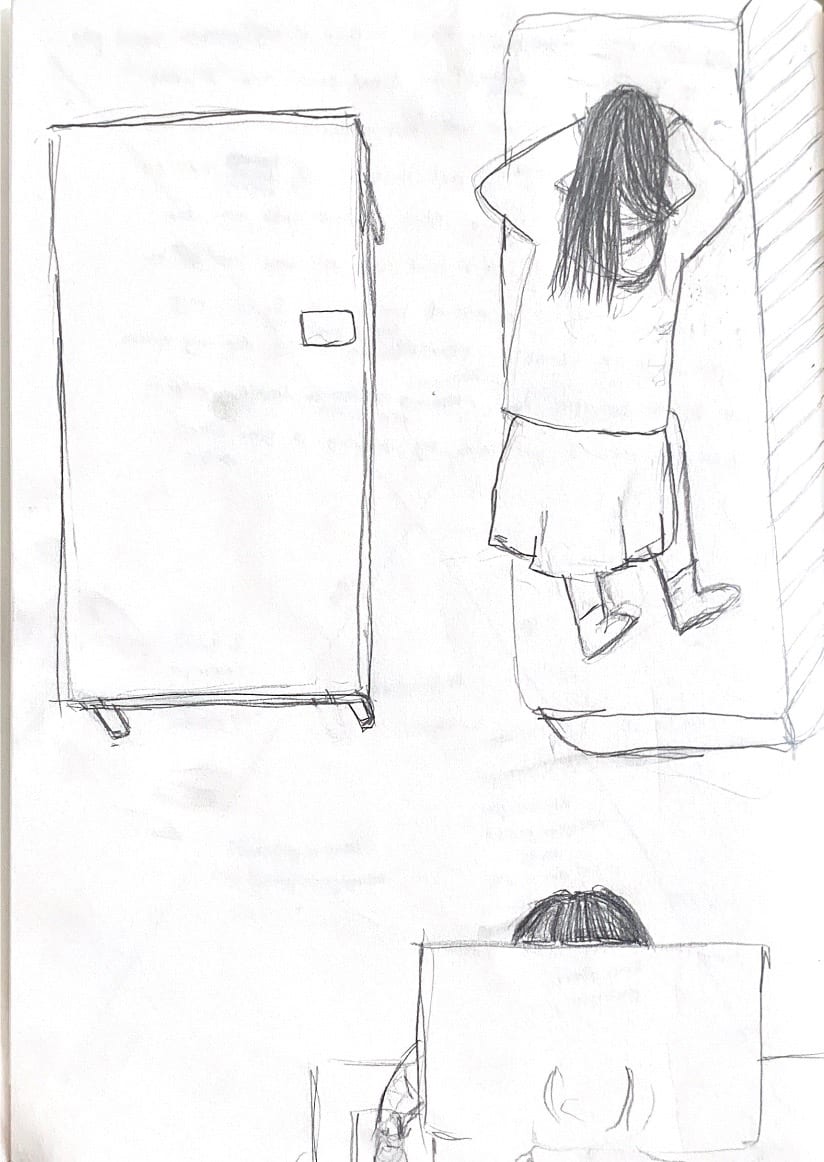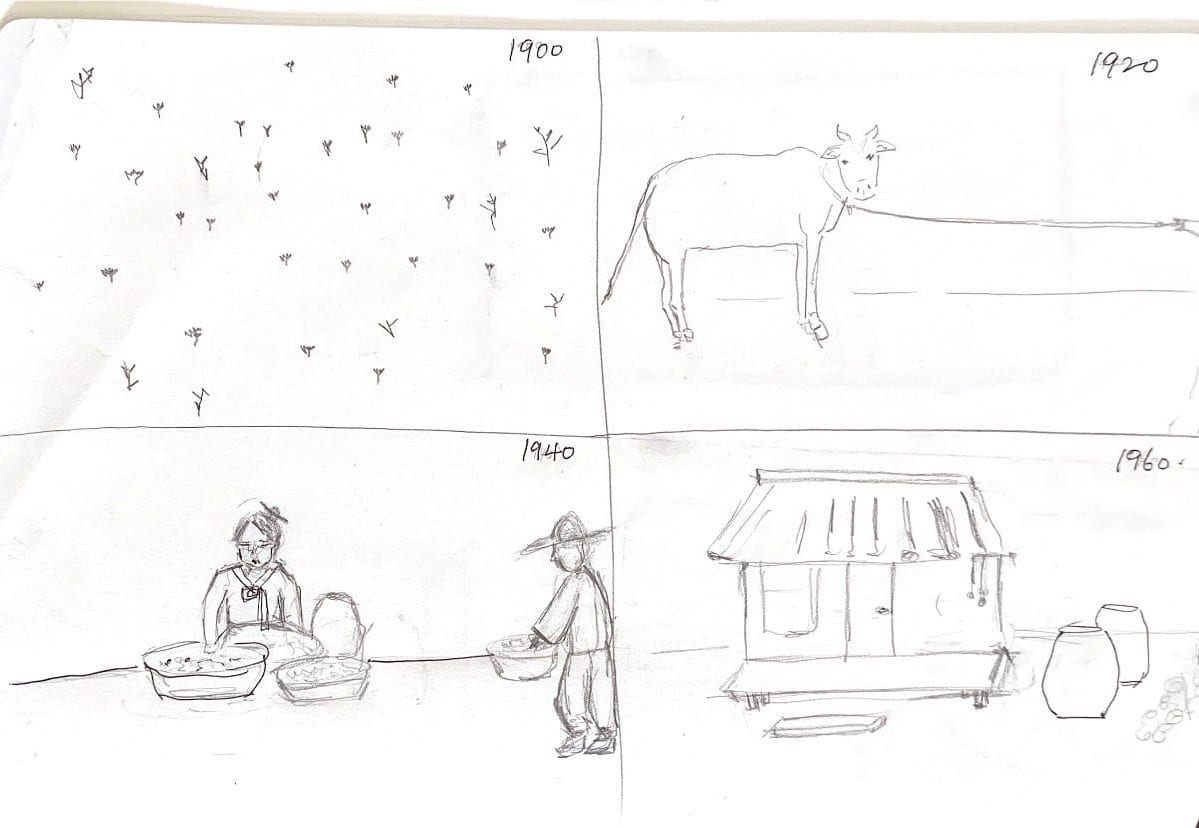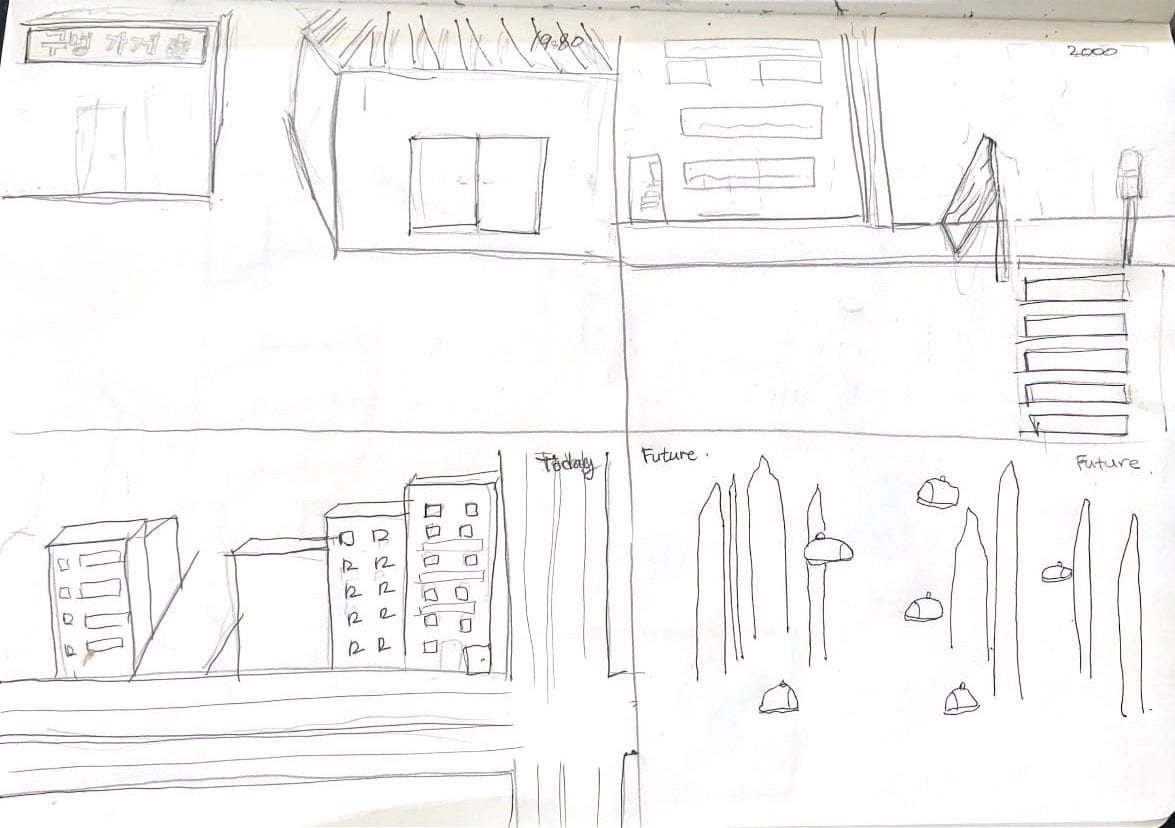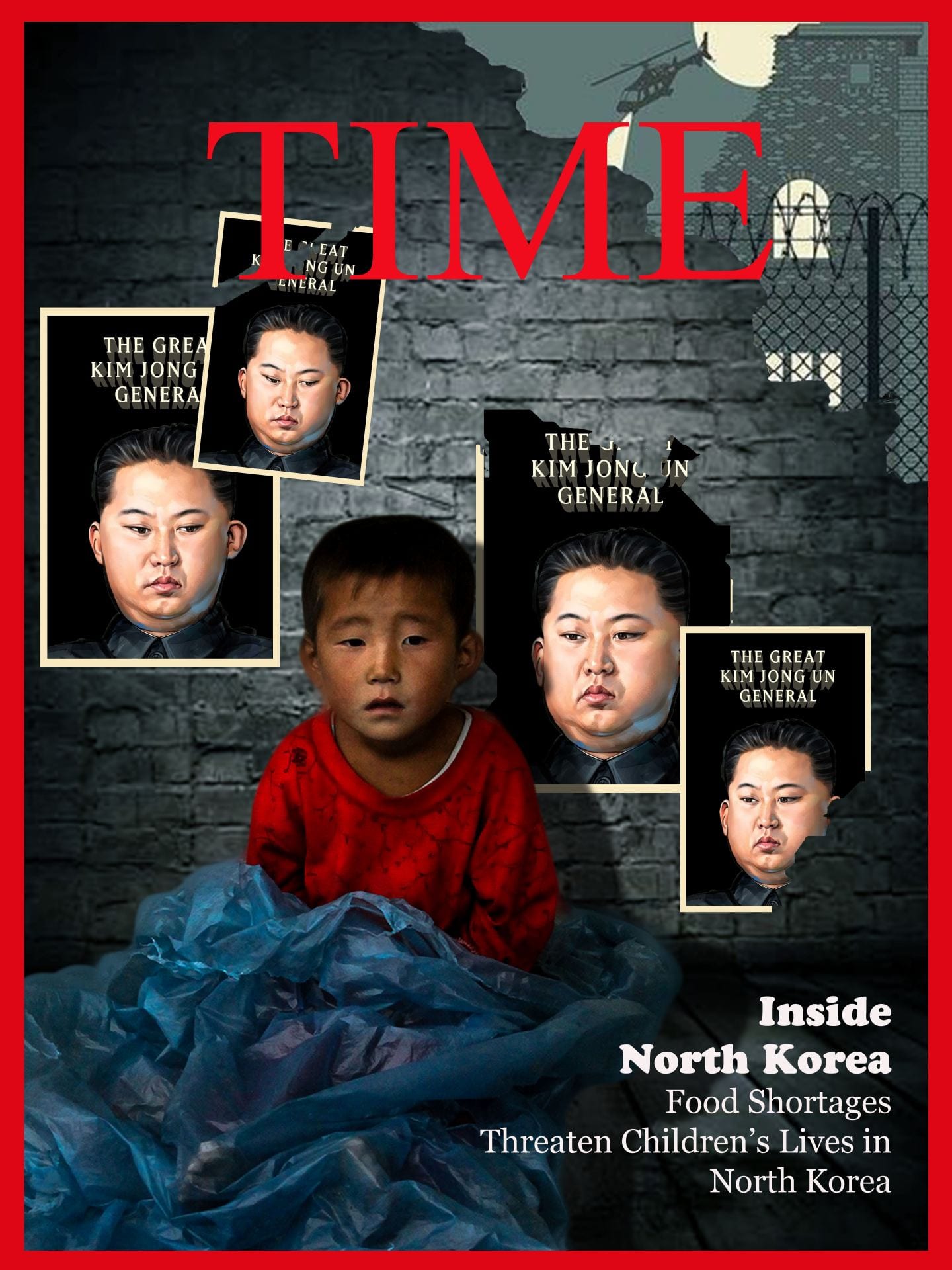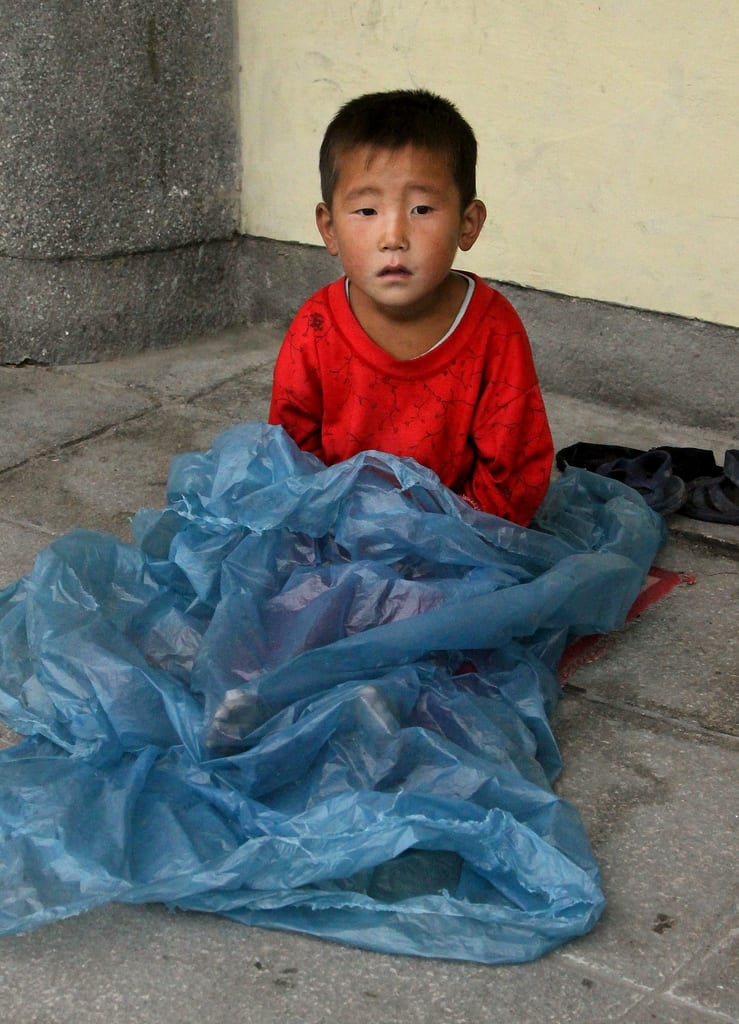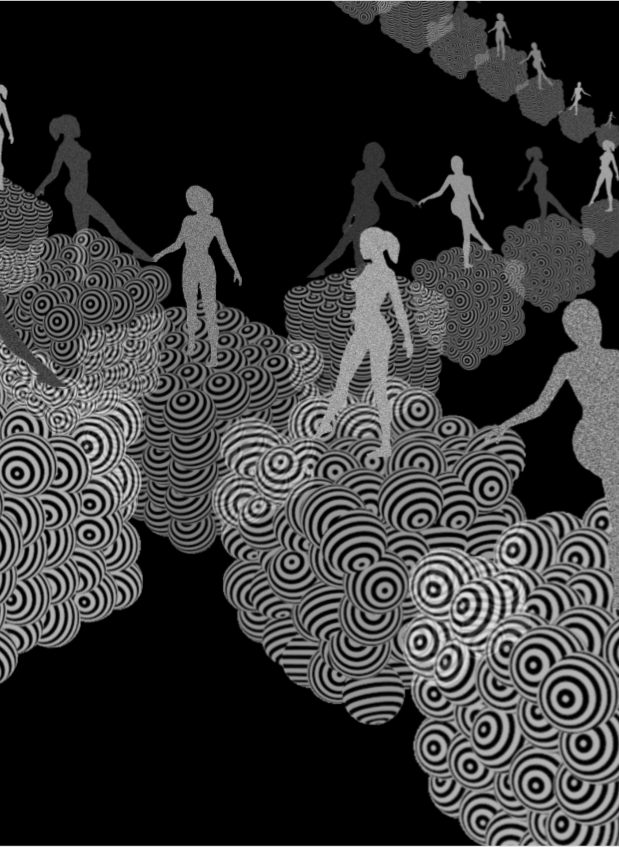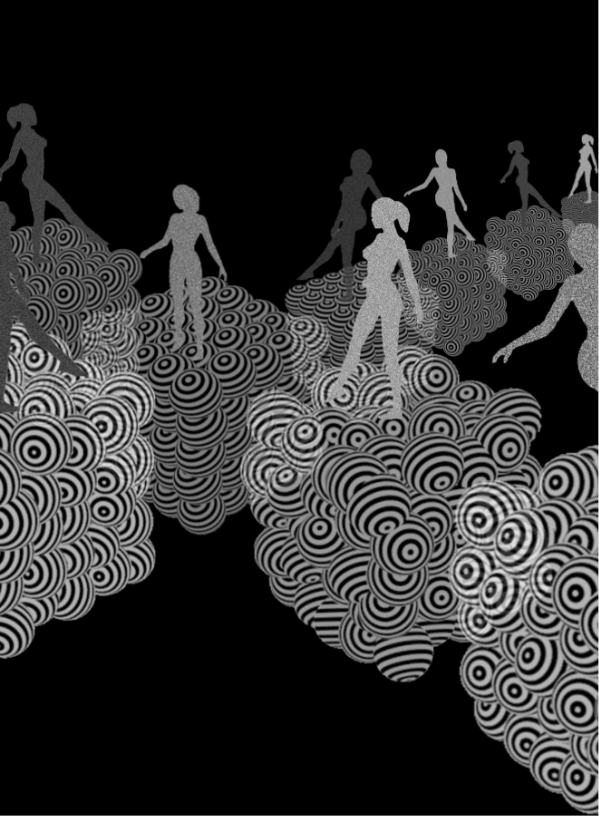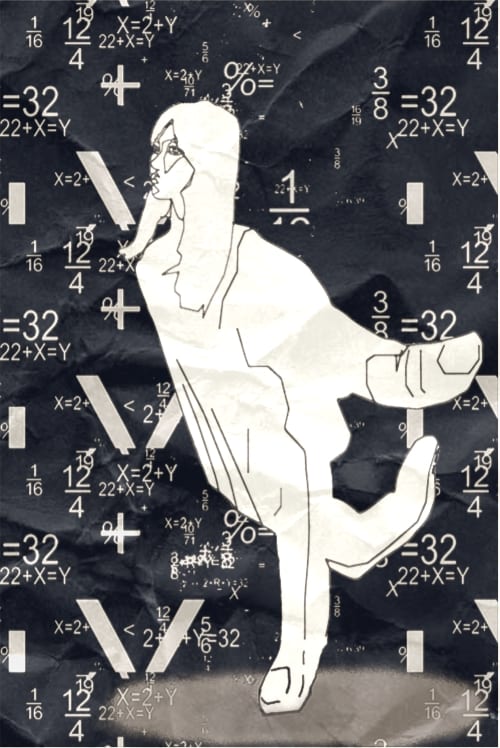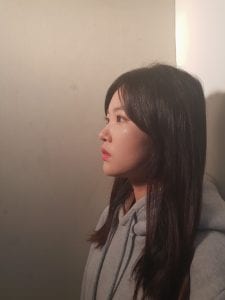“Part1: Forum”
The ‘Forum’ is the theme I have chosen for the project. Considering the trait of Canal Street, it had the perfect conditions of location at which the boundaries of SoHo, Chinatown, and Little Italy border each other. I had inquired myself about the current problems of the Canal street and sort it out into three consequences—Ambiguous Identity of the place, Confusing boundaries, and hectic atmosphere. Therefore, to satisfy the important role that Canal Street has for Lower Manhattan, I had considered the public place that provides information of where boundaries meet each other and resting place to enjoy various cultures. This advantage can bring about the synergy effects on both the residents and the visitors. For this reason, I chose to focus on the theme of ‘Forum’ to make Canal Street a “medium” at which various cultures and intricate webs of interests can meet shared goals. That way, this project is likely to stimulate the regional economy and to solve any problem in concord with each area. As Canal Street is consumed by the two of the city’s wealthiest neighborhoods, accessible by nearly every subway line, I felt it might be the efficient place.[1]
Mapping out a general plan, there will be a big compass-shaped structure (Fig1[2], 2[3]) in the middle of the public area. Then the information of each area and directions are going to be inscribed on the surface of the structure. Also, some illustrations of typical places that city recommend to visit will be inscribed in each area. That way, visitors can search for the way to go easily and know which place has what they were looking for.
Around this sculpture, there will be places for food trucks, entertainment areas, and a sitting area. The food trucks will be located in the direction regarding to what they are selling. For instance, the south part of the sculpture is Chinatown, so there will be some food trucks (Fig3[4], Fig4[5]) that sell Chinese traditional snacks in south-toward direction. This will be like a forecasting experience before the visitors actually visit that place. In addition, the place where people can have their foods, rest, and enjoy the performance will also be provided. Next to the seating areas, there will be free area where musicians, artists, performers can show off their talents.
As I mentioned, visitors will have opportunities to sample some of the best dishes from each area that will bring about prosperity in regional economy. Canal Street will also make profits of this by establishing a Canal Street Food Truck Association. According to Food Truck Fatty, there is a Washington State Food Truck Association (Fig 5[6]), a non-profit advocacy organization, that provides food trucks a central hub by giving informative sources to make harmony. Most of the food trucks will be operating from current business from each communities.
[1] Hayley Phelan, “The Gentrification of Canal Street,” The New York Times, May 16 2018.
[2] FRP shaped compass, Malong Company. http://malong.jbrix.co.kr/archives/frp-%EB%82%98%EC%B9%A8%EB%B0%98-%EC%9D%98%EC%9E%90-%EC%A1%B0%ED%98%95%EB%AC%BC-%EC%82%AC%EC%9D%B8%ED%8C%90-%EC%95%88%EB%82%B4%ED%8C%90-%EC%A0%9C%EC%9E%91-%EC%A0%84%EB%82%A8-%EC%99%84%EB%8F%84-2/
[3] CACADUGAR. COM cacadgar, Aug 4 2016. https://www.cacadugar.com/1205
[4] “Food Truck Associations,” Food Truck Fatty. Nov 25 2013. http://www.foodtruckfatty.com/food-truck-associations/
[5] Priscila Korb, “Food Truck Festival, Breakfast Crawl, Fairs: LI Weekend Picks,” Patch, May 18 2018. https://patch.com/new-york/islip/food-truck-festival-breakfast-crawl-fairs-li-weekend-picks
[6] Food-Truck-Festival, QC Exclusive. https://qcexclusive.com/culture/all-the-carolina-spring-festivals-you-cant-miss-this-year/attachment/food-truck-festival/
If the concept of self-governing focuses on the process of solving local problems with the efforts and capacity of the local residents themselves, then there might be problems about how to improve the voluntary participation and problem-solving ability of local residents. The scenario is about the imaginary situation with a background of this park. There is a high tension between the food truck owners whether to divide the space.
# Scenario 1
Canal Park – DAY
Nicky comes to the Chinese food truck, owned by Xuan. He argues that Xuan has invaded the Italian Food Truck Area.
Xuan gets out of the truck and fights back.
Nicky
(sarcastically)
Oh~ Chinese food smells good.
Xuan
(breathing heavily)
What again? Can we just be cooperating with each other? We are both in the same situation although we are different neighbors.
Nicky
I just feel like it isn’t fair for all. Why don’t you work at the Canal Street Market Food Hall? It’s right in front of China Town and is open every day.[1] UMM~
And you know, a poor merchant like me can’t dare to dream about a small restaurant in Little Italy. New owners are continuing to charge a luxury high rent which only creates a space for the upscale Italian eatery.[2]
Xuan
Ha. Don’t tell me that it hasn’t crossed your mind. Chinatown is not what it used to be. Far cry from the good old days that I run my family business before I got kicked out. We had this long succession of economic blows after 9/11 tragedy and SARS fear.[3]
Now Chinatown has changed to embrace the recovery. But then it no longer sells its cheap and delicious food. Rather, restaurants confront high expenses for state’s minimum wage increases. And you see… Whole Foods and Trader Joe’s has already planted themselves over there right at the core of Chinatown! Do you think that I can survive there? [4]
Mike, a SoHo food truck owner comes over to arbitrate in the dispute. He also holds additional post of director in Canal Street Food Association.
Mike
(sighingly)
Hey Guys, Calm down. Don’t you remember our intention to make this space?
Our strategy is to make the sense of place that can be captured in spirit of communities that, in turn, create a positive community impact. You guys should be proud of what you are doing, not complaining about the reality and stuck in the past. Individual should use key community resources around culture, history and production method and it will make your communities to purposefully take pride in and ownership of local specialties based on community brand, right?[5]
Xuan
Ya. That is what I was trying to tell him. We are to represent our community and let’s use this place as a symbol of unity. I will stay in my area so don’t be aggressive to me Nicky, please.
Nicky
Hey, Mike. It’s your job to make this area equitable to every community so please come up with strict rules. Then, I will be corporative to achieve the same goals whatever you guys were saying. A win-win strategy comes after if some basic rules are made for everyone.
Mike
Yes, I firmly on you, nicky! I will make sure that my personal interest won’t be intervening this community business. I know that it is an important task for me to understand every individuals’ responsiveness to community influence and consider the impact of organizational members.[6]
Let’s measure the exact three partitions and draw a line between them. Also, I will be holding committee’s conference every two weeks so that every representative can deliver one’s opinion and petition be half of every communities. Hope to See you than.
Everyone, keep up the good work!
[1] “Get a taste of the new Canal Street Market Food Hall,” Office, May 12, 2017.
[2] Linda O’Flanagan, “Seller sees big profit in Little Italy,” Real Estate Weekly, Dec 21 2011.
[3] Mollotov, Sabina. “LMDC has big plans for Chinatown.” Real Estate Weekly, 27 Aug. 2003, p. 9. General OneFile, http://link.galegroup.com/apps/doc/A109133571/ITOF?u=nysl_me_newsch&sid=ITOF&xid=3882306e.
[4] Chen, Jackson. “Times achangin’ in Chinatown.” Real Estate Weekly, 28 Nov. 2018, p. D1. General OneFile, http://link.galegroup.com/apps/doc/A564607558/ITOF?u=nysl_me_newsch&sid=ITOF&xid=20c9138a.
[5] Raed Elaydi, Josetta McLaughlin, “Cultivating terroir in subsistence markets: Development of terroir strategy through harmony-with-community framework,” Journal of Business Research, Dec 2012.
[6] Christopher Marquis, Julie Battilana, “Acting globally but thinking locally? The enduring influence of local communities on organizations,” Research on Organizational Behavior, 2009.
<Reflection>
-> I have been developing the theme of ‘Forum’ in terms of sharing space where different kinds of interests meet. Relating to my major of strategic design and management, I was able to focus deeply on how society or the community is formed and the impact of environment. Overall focus points on this project were the integration and common goals. To come up with public space where residents, visitors, and regional culture could satisfy their own interests, I designed the high-line parks that has entertainments, commodities and advertisement of the neighborhood.
I researched for similar examples in real world. Gathering the issues from food truck association and public community. I intended to deliver the thoughts of individual and how conversation can bring healthy discussion. The project for studio was interacting with this project in terms of the space planning. The way how it is divided is determined by the promise between the community members. At large, this dialog was efficient method to take introspection of the characters. That way, it is more easier to seek imaginative solutions when gathering individuals’ thoughts. From this point onward, I could be a great member of society that sympathize with constructing meaningful environment. Over this bridge 4, I was able to look back myself so that I could better understand the roles of me as a participant to city. We are all potential maker, writer, thinker and researcher that complement to this society and our trivial thoughts can bring about butterfly effect after all.

